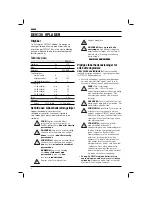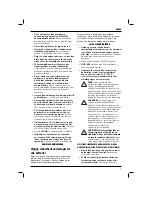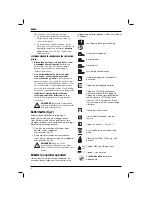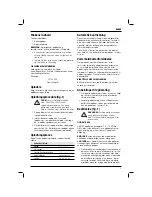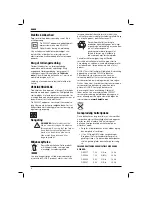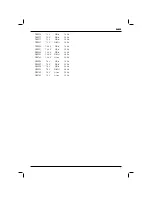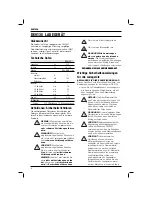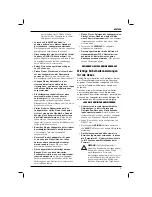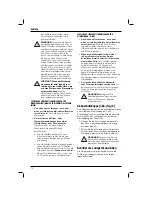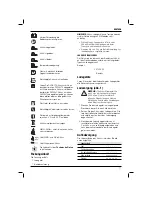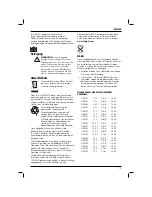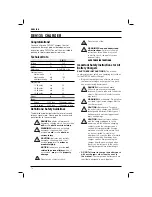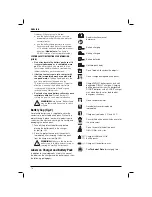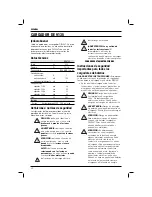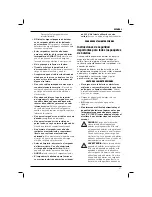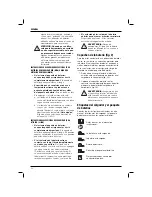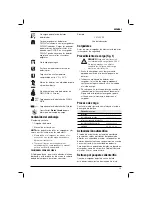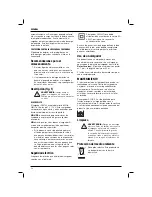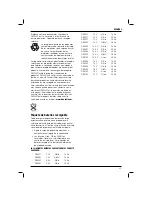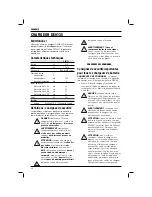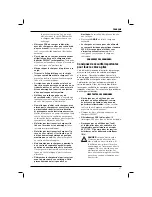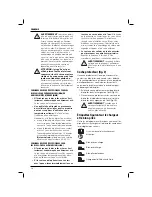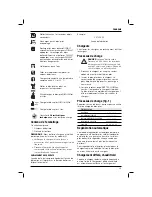
ENGLISH
15
• These chargers are not intended for
any uses other than charging D
E
WALT
rechargeable batteries.
Any other uses
may result in risk of fire, electric shock or
electrocution.
• Do not expose charger to rain or snow.
• Pull by plug rather than cord when
disconnecting charger.
This will reduce risk of
damage to electric plug and cord.
• Make sure that cord is located so that it
will not be stepped on, tripped over, or
otherwise subjected to damage or stress.
• Do not use an extension cord unless it
is absolutely necessary.
Use of improper
extension cord could result in risk of fire, electric
shock, or electrocution.
• Do not place any object on top of charger
or place the charger on a soft surface that
might block the ventilation slots and result
in excessive internal heat.
Place the charger
in a position away from any heat source. The
charger is ventilated through slots in the top and
the bottom of the housing.
• Do not operate charger with damaged cord
or plug
— have them replaced immediately.
• Do not operate charger if it has received
a sharp blow, been dropped, or otherwise
damaged in any way.
Take it to an authorized
service center.
• Do not disassemble charger; take it to an
authorized service center when service or
repair is required.
Incorrect reassembly may
result in a risk of electric shock, electrocution or
fire.
• Disconnect the charger from the outlet
before attempting any cleaning. This will
reduce the risk of electric shock.
Removing
the battery pack will not reduce this risk.
• NEVER
attempt to connect 2 chargers together.
• The charger is designed to operate on
standard 230V household electrical power.
Do not attempt to use it on any other
voltage.
This does not apply to the vehicular
charger.
SAVE THESE INSTRUCTIONS
Important Safety Instructions for All
Battery Packs
When ordering replacement battery packs, be sure
to include catalog number and voltage. Consult the
chart at the end of this manual for compatibility of
chargers and battery packs.
The battery pack is not fully charged out of the
carton. Before using the battery pack and charger,
read the safety instructions below. Then follow
charging procedures outlined.
READ ALL INSTRUCTIONS
• Do not charge or use battery in explosive
atmospheres, such as in the presence of
flammable liquids, gases or dust.
Inserting
or removing the battery from the charger may
ignite the dust or fumes.
• Charge the battery packs only in D
E
WALT
chargers.
• DO
NOT
splash or immerse in water or other
liquids.
• Do not store or use the tool and battery
pack in locations where the temperature
may reach or exceed 40 ˚C (105 ˚F) (such as
outside sheds or metal buildings in summer).
DANGER:
Electrocution hazard. Never
attempt to open the battery pack for
any reason. If battery pack case is
cracked or damaged, do not insert into
charger. Electric shock or electrocution
may result. Damaged battery packs
should be returned to service center for
recycling.
WARNING:
Never attempt to open the
battery pack for any reason. If battery
pack case is cracked or damaged, do
not insert into charger. Do not crush,
drop or damage battery pack. Do not
use a battery pack or charger that has
received a sharp blow, been dropped,
run over or damaged in any way (i.e.,
pierced with a nail, hit with a hammer,
stepped on). Damaged
battery packs should be returned to
service center for recycling.
CAUTION: When not in use, place
tool on its side on a stable surface
where it will not cause a tripping or
falling hazard.
Some tools with large
battery packs will stand upright on the
battery pack but may be easily knocked
over.
SPECIFIC SAFETY INSTRUCTIONS FOR NICKEL CADMIUM
(NiCd) OR NICKEL METAL HYDRIDE (NiMH)
• Do not incinerate the battery pack even if it
is severely damaged or is completely worn
out.
The battery pack can explode in a fire.
• A small leakage of liquid from the battery
pack cells may occur under extreme usage
or temperature conditions.
This does not
indicate a failure.


